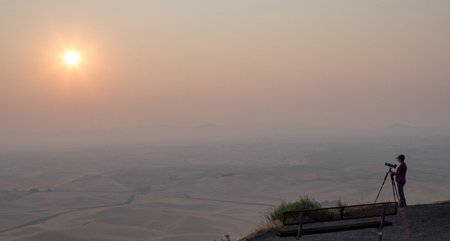|
||
|
A photograph is usually looked at - seldom looked into. ~ Ansel Adams |
||
|
|
|
 |
Atmospheric Perspective this perspective - can be shown if the layers are separated by specific atmospheric conditions, such as fog or maybe a mixture of light and shade on successive hills. Ideally, the photo would be better if the foreground is dark. This will add depth to your image. |
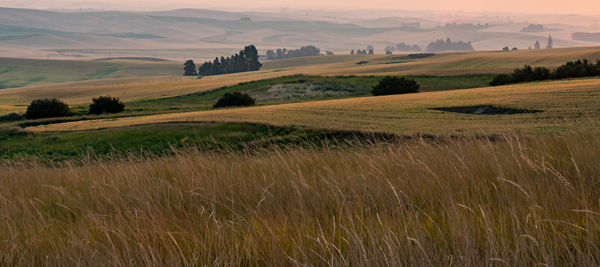 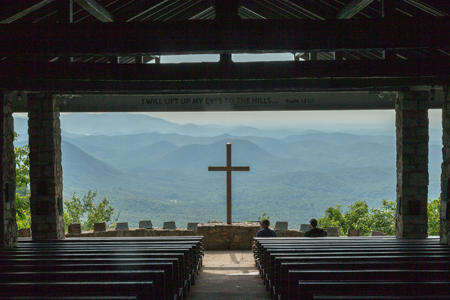 |
Diminishing Scale Perspective - the most obvious scenes are where we can see a long way into the scene. One example of this is when you photograph a scene with rolling hills stretching off as far as the eye can see. As you look into the scene, the landscape features become less defined as the distance increases. This will give your image the appearance of depth . |
 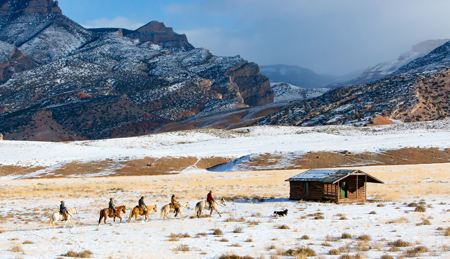 |
Overlapping Perspective - this type of perspective is when objects at the front of the scene can block or overlap parts of the subject further back in the scene. Using the example from above, the one hill slope is broken by another that gives us the overlap of features with one hill nearer than the other. Another example if this perspective can be the use of framing in your photo. The viewer of your image will think the object in the foreground appears closer than the object in the background, thus giving the photo depth.. |
 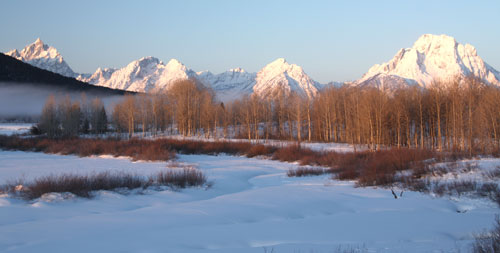 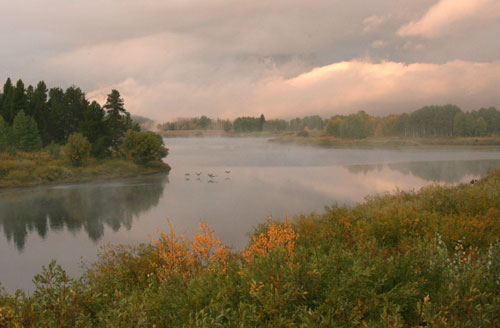 |
Linear Perspective - this type of perspective is also known as Converging Lines or Vanishing Point Perspectives. This is when a photo is taken of a road that vanishes into the distant horizon. As your eye moves down the tracks or road, the lines start off as parallel lines. Then as you move further down the road, they seem to converge. This not only adds depth to your photo, but also distance. One way to change Linear Perspective is with the type of lens you use. If you photograph the road with a telephoto lens, you will see a shorter section of the road tapering off into the horizon. If you create a photo of the road from the same position using a wide angle lens, you will get a completely difference sense of depth and scale. You can have more than one
vanishing point. If you stand at a road intersection and photograph
one road going one way, that is one vanishing point. If you backup
and show both roads going in difference directions, you have two
vanishing points. |
|
Forced Perspective - this type of perspective uses optical illusion that challenges your viewer’s sense of scale by distorting the relative size of objects. An example is someone appears to be holding up the Leaning Tower of Pisa. To use this perspective in your photos, place a large object in the background and a small object in the foreground and watch as the relative distance of these objects plays tricks on your eyes. Forced perspective can also be achieved by using a fish-eye lens. |
|
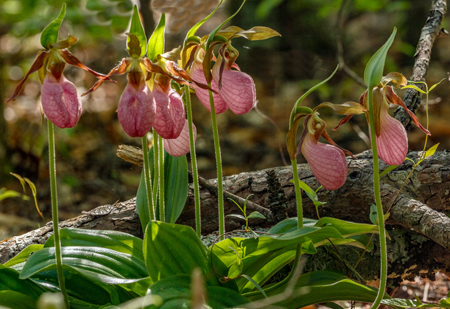
|
Viewpoints Perspective - you can change your Viewpoint by photographing down low (on the ground) or up high. Most of us photograph at eye level, however changing our Viewpoint can change the perspective of your photograph. Reflections can offer a completely difference perspective when taken at water level. Photographing a small pool can be made to look like a big lake if taken with a wide-angle lens. Using a high view perspective is sometimes hard to do because there is nothing to use. However, when I photographed Prismatic Springs in Yellowstone National Park, I was fortunate enough to be able to climb a hill and shoot down on the springs and get the whole pool. |
|
Size Perception - If objects of the same size are placed in a scene, they will appear to be the same size in a photograph. However if you move one or more of the objects closer or farther from the camera, the objects’ relative size will change in the photo. Sometimes this can be done in the field, and other times not. Keep in mind; we want to show depth in our photo. |
|
 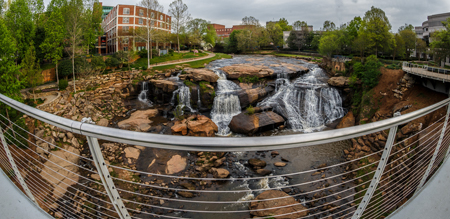 |
Volume Perception - when a subject casts a shadow, the size and shape of the shadow not only gives the subject depth, it also can give it a three dimensional quality. The shadow also gives the viewer information about the size and shape of the subject. Other things that will change the perception of a photo are lens, moving to the right or left, and the digital darkroom. A telephoto lens tends to squash the subject and make the background closer together whereas wide-angle lenses tend to make a subject look further away or smaller. |
  |
Next time you go out, photograph the scene as usual, and then move to the right or left. The background will not change, but the foreground will. “The closer the subject is to the foreground, the bigger the impact”. In some cases you can correct perspective with a digital software program. If you are photographing architecture of tall building and/or subjects with straight lines, they tend to get distorted. However, if you are using Photoshop or Lightroom, they are easily fixed. Or you can brighten up bright colors with lots of contrast, anything to show depth. Photography is an art and with that come rules for composition. However, these rules are not set in stone. Next time you are out, start to look for things from different angles and new perspectives. This may open up a new world to you. The goal is to train your eyes to see things differently. In conclusion, many of the types of perspective mentioned here are very familiar to us in everyday life regardless of whether we are photographing or not. So familiar, that we may take them for granted. Experimenting with perspective can be a fun and creative way to improve your composition. So next time you are out, don’t just raise your camera to your eye and start shooting. Slow down and think about how you can add depth to your image.
|

